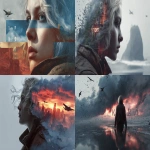Explore the Best AI Image Gallery
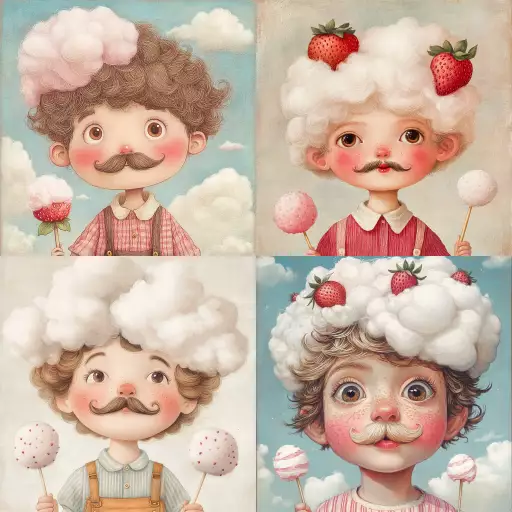
Blockchain in Finance: Reimagining Creative Industries
The financial world is undergoing a seismic shift with the advent of blockchain technology. Beyond its revolutionary impact on traditional finance, blockchains decentralized and transparent nature holds immense potential for reshaping creative industries, empowering artists, creators, and consumers alike. This post explores the multifaceted influence of blockchain in finance on the creative landscape, examining its applications, ethical considerations, and future trends.
Unlocking New Avenues for Creative Collaboration
Blockchain enables seamless collaboration between creators and audiences, fostering a more equitable and transparent ecosystem. Decentralized platforms built on blockchain can facilitate direct interactions between artists and their fans, bypassing intermediaries and empowering artists to retain control over their work and intellectual property.
Smart Contracts: Automating Creative Processes
Smart contracts, self-executing agreements encoded on the blockchain, can revolutionize creative workflows. They can automate royalty payments, licensing agreements, and copyright enforcement, ensuring fair compensation for creators and simplifying complex contractual processes.
Tokenization of Creative Assets
Blockchain enables the tokenization of creative assets, representing ownership or access rights to digital art, music, videos, and other intellectual property. This fractionalization opens up new avenues for investment and ownership, allowing fans to invest in their favorite artists and creators.
NFTs: Empowering Digital Ownership
Non-fungible tokens (NFTs) have emerged as a game-changer for digital art and collectibles. NFTs provide verifiable proof of ownership and authenticity, empowering artists to monetize their digital creations and offering collectors a unique way to engage with art.
Ethical Considerations: Navigating the Challenges
While blockchain offers immense potential, it also raises ethical considerations that require careful attention:
- Data Privacy and Security: Blockchains immutability can raise concerns about data privacy and security. It is crucial to implement robust security measures and ensure transparent data handling practices.
- Accessibility and Inclusivity: Access to blockchain technology and its benefits should be equitable, ensuring that all creators, regardless of their technical expertise or resources, have the opportunity to participate.
- Copyright and Intellectual Property Protection: While blockchain can enhance copyright protection, it is essential to establish clear legal frameworks and protocols for addressing intellectual property rights in the digital realm.
Future Trends: Shaping the Creative Landscape
The integration of blockchain technology into creative industries is still in its early stages. However, several trends are shaping the future of this dynamic landscape:
- Decentralized Autonomous Organizations (DAOs): DAOs, governed by smart contracts and community consensus, will empower creators to collaborate and make collective decisions, fostering a more democratic and transparent creative ecosystem.
- Metaverse Integration: Blockchain-based metaverse platforms will provide immersive virtual environments where artists can showcase their work, interact with audiences, and create collaborative experiences.
- AI-Powered Creativity: The convergence of blockchain and artificial intelligence (AI) will unlock new possibilities for creative expression. AI algorithms can assist artists in generating content, personalizing experiences, and exploring innovative artistic concepts.
Conclusion
Blockchain technology is poised to revolutionize the creative industry, empowering creators, fostering collaboration, and unlocking new avenues for artistic expression. By embracing its potential while addressing ethical considerations, we can pave the way for a more equitable, transparent, and innovative creative future.



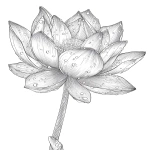
](https://images.ai-img.art/thumbnails/150/6383a0dfa65fd6acaa8578ce5bf88ae842f04e8e1bd57afb464693e074552551.webp)

](https://images.ai-img.art/thumbnails/150/fbe13ead561a13df4a83a4a8bbe4dfa82e2b4e3b646c7d448a7db8a399fe9fff.webp)


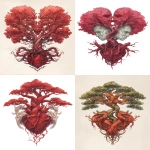
](https://images.ai-img.art/thumbnails/150/eadae7bc8f86e8ce7f86adaccfe31b224464bdf0c6f089eeed1133445b6c2d98.webp)
](https://images.ai-img.art/thumbnails/150/556113bc149043075f69598fbc4915714d21f9d47031a08a7575aff4ae7e6e6a.webp)
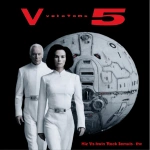
](https://images.ai-img.art/thumbnails/150/9001a31ea1e3005593fe67f7a21ecc32f331b4bee215e387bd6fb6f6eff32fad.webp)
](https://images.ai-img.art/thumbnails/150/04fb0175cf1e0e99e5bdb2bf089beaa4372ab68341e2de1a2ac91160e562c1dc.webp)





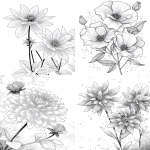

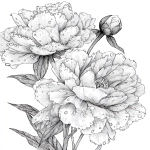


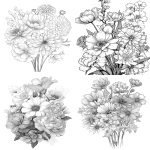

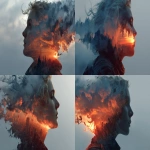
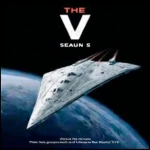
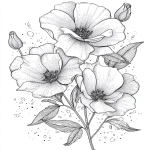
](https://images.ai-img.art/thumbnails/150/daf4013ace080f36040c81c2bfa625ced8d39bc647e9c071c33be588177ba52d.webp)
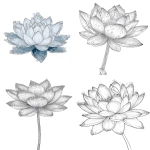
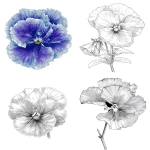
](https://images.ai-img.art/thumbnails/150/4033d48d79eff1f42e42c8516d6432c4e8232a6e813750f3b53a70e524ea3ac8.webp)


](https://images.ai-img.art/thumbnails/150/5313dbf71fc9396bec8b098e49575cef0d04464f851b37e775a162320eb7f5c0.webp)


](https://images.ai-img.art/thumbnails/150/a2279a4773c6672cab6d1c3a08370b869ebd61a0e87883338841bfd1dc6b3dd6.webp)
](https://images.ai-img.art/thumbnails/150/c37134f46081799e67131f46f7812c0c31faa3349a612bde0f5fd3554961892c.webp)

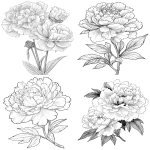

](https://images.ai-img.art/thumbnails/150/ee39b48174d35bcc806cad3ec9cf220071a8f6c0cf967db3e3494d1f41210129.webp)
